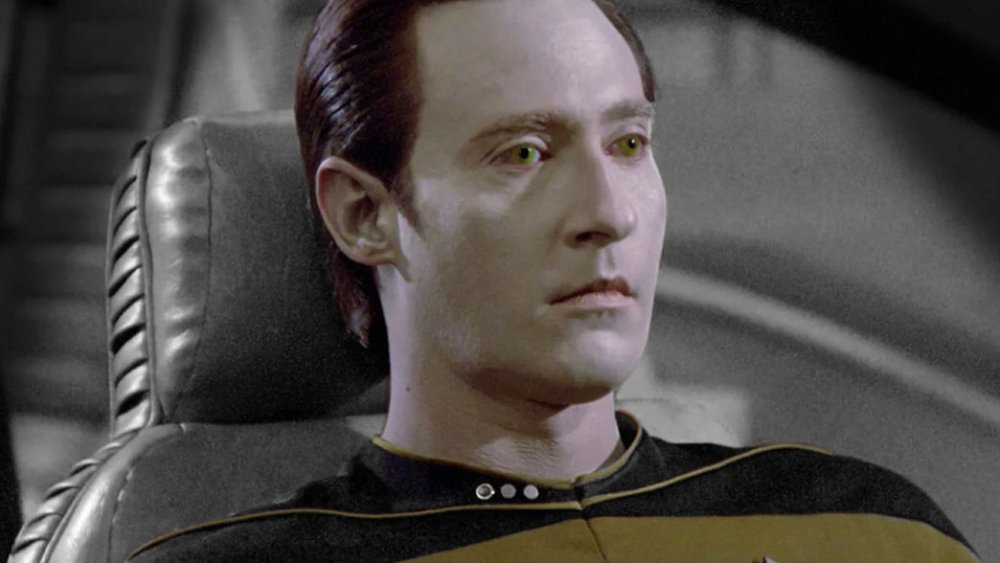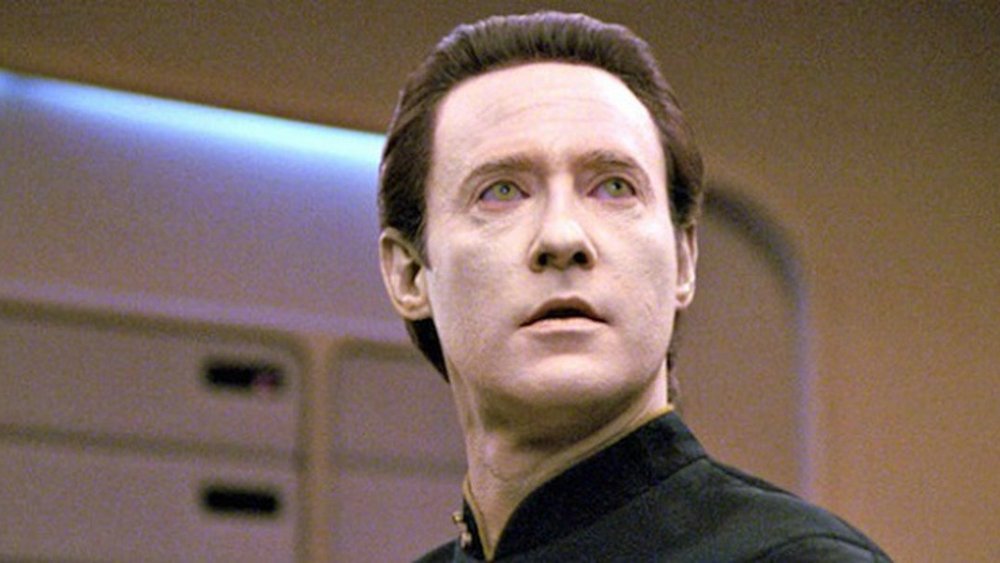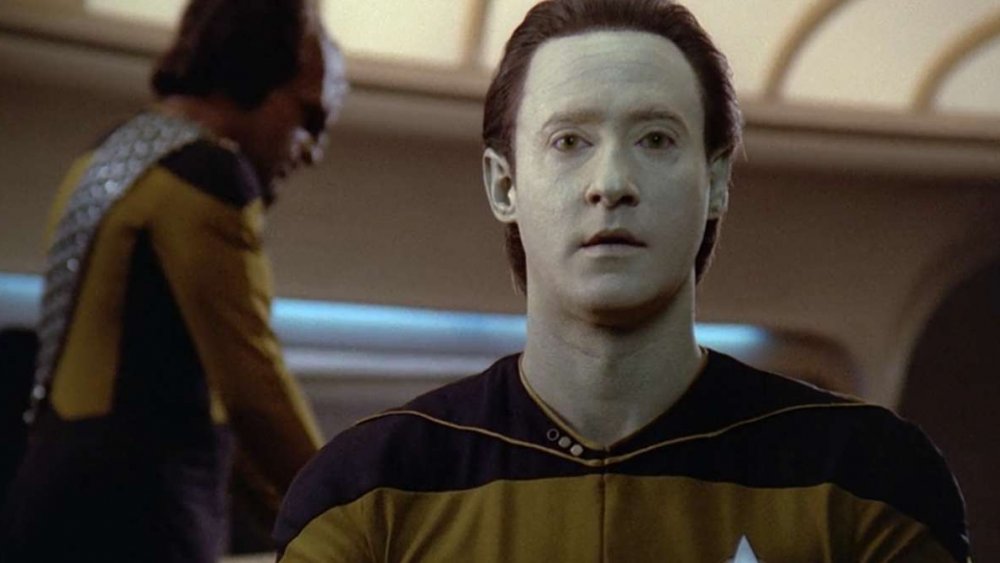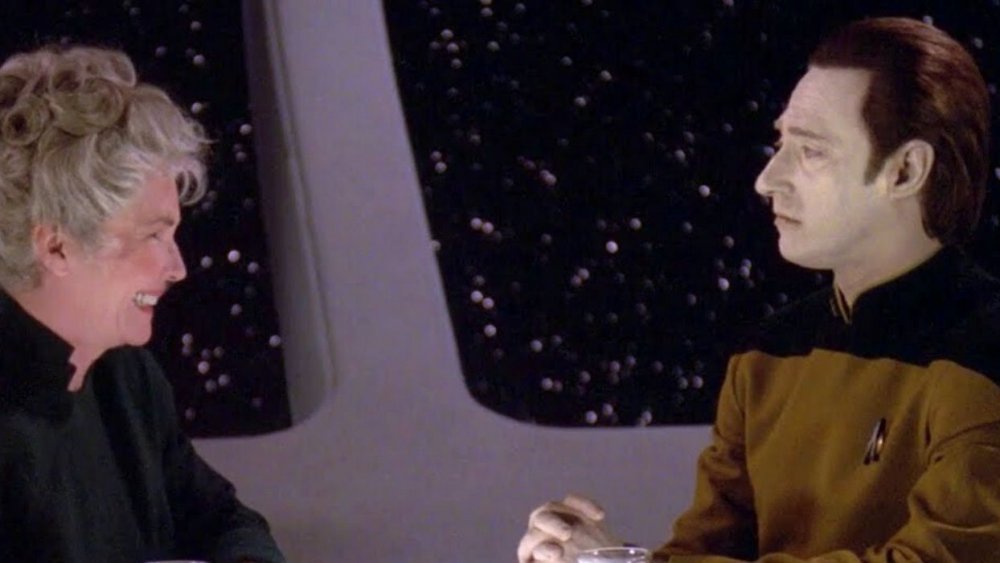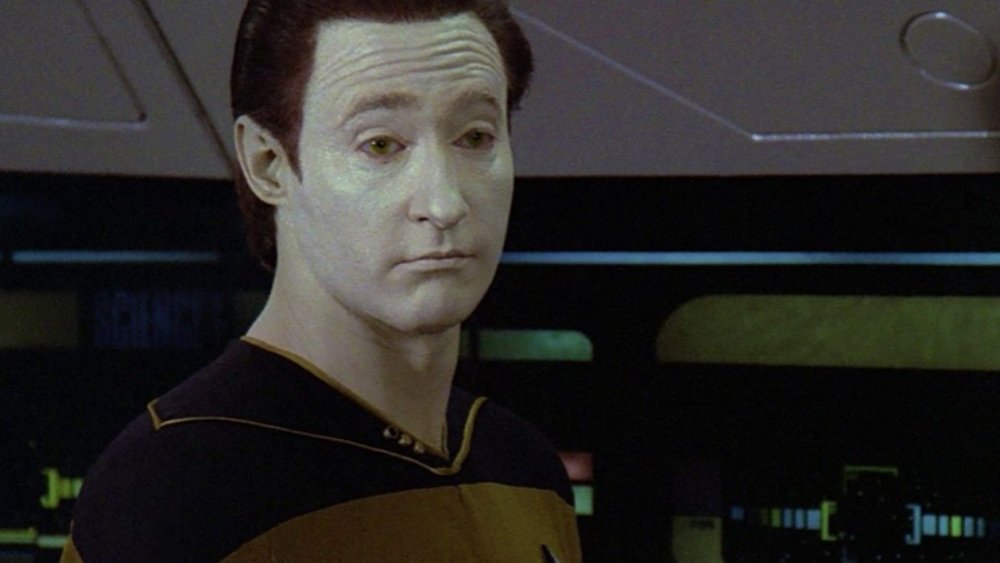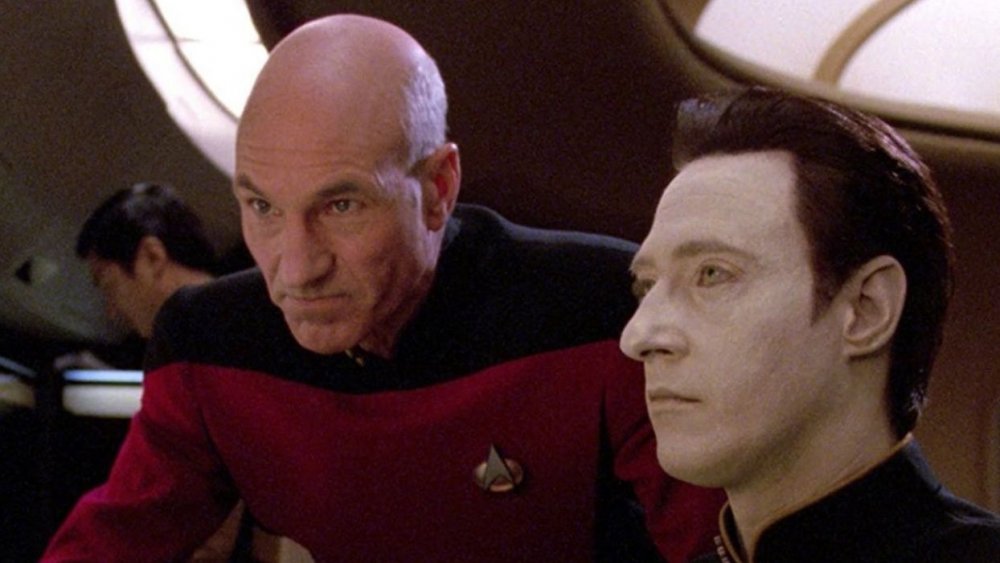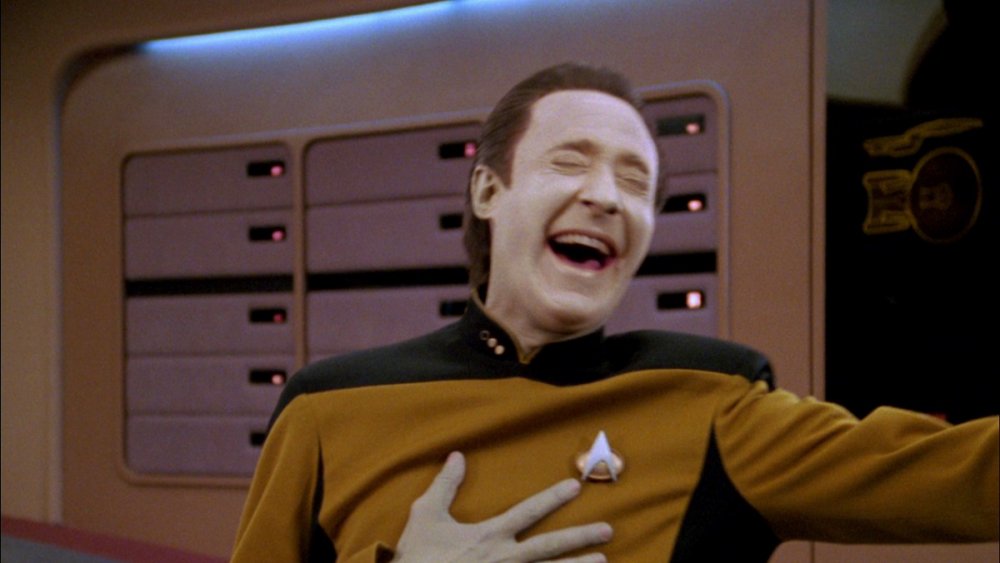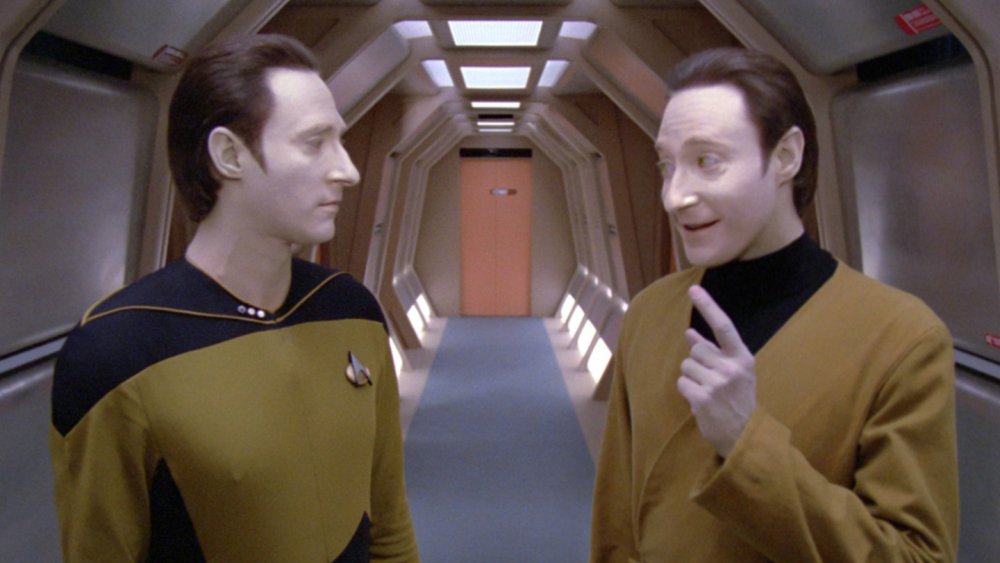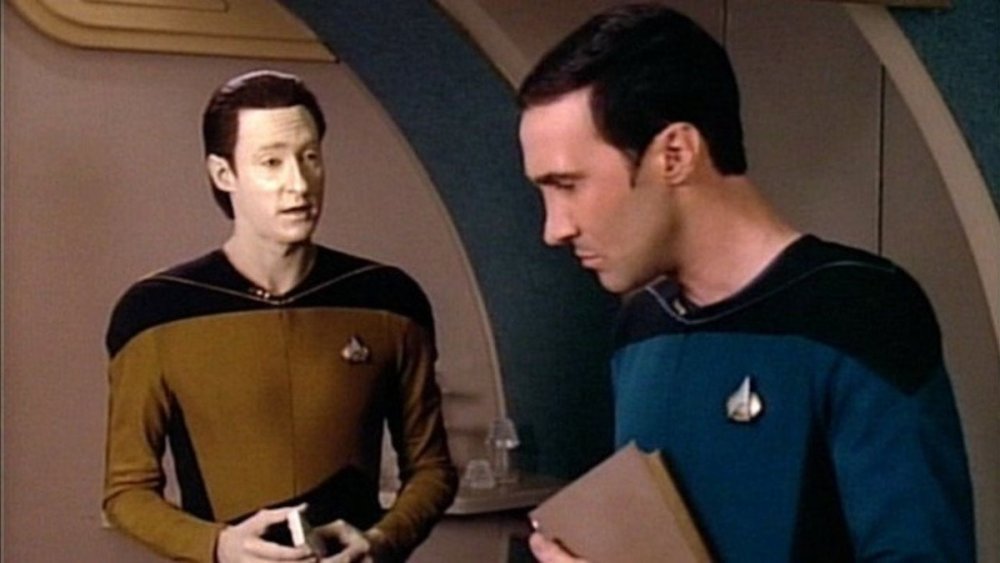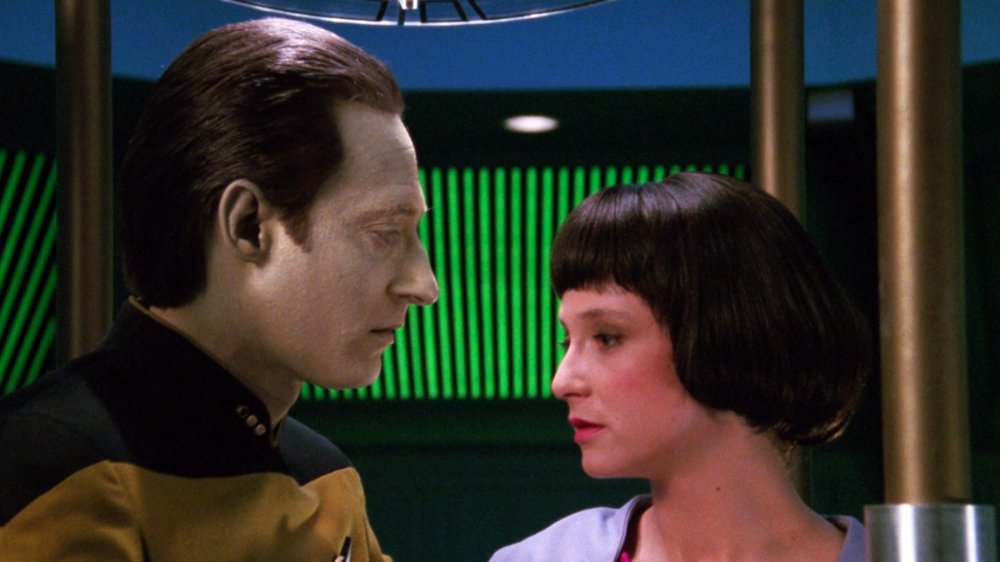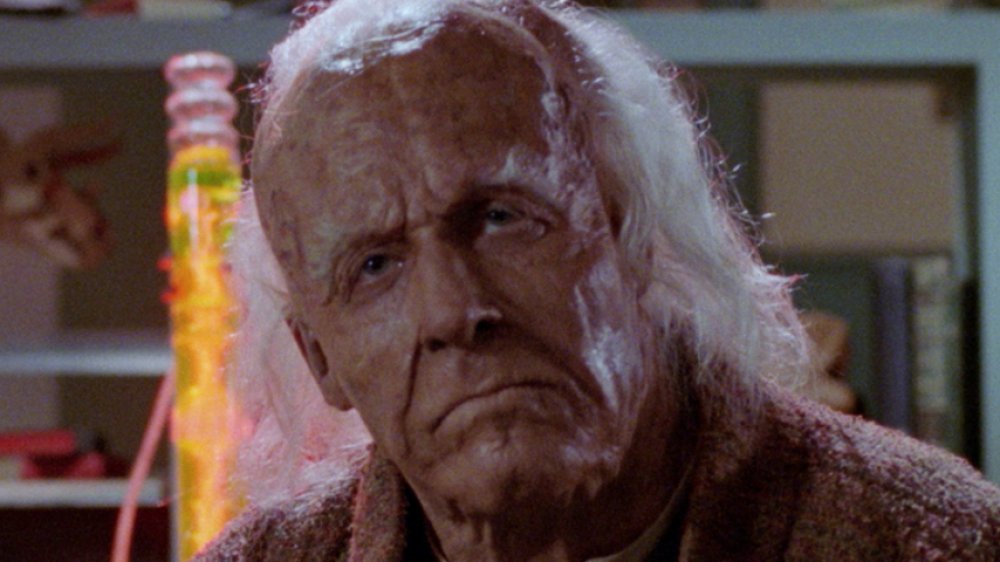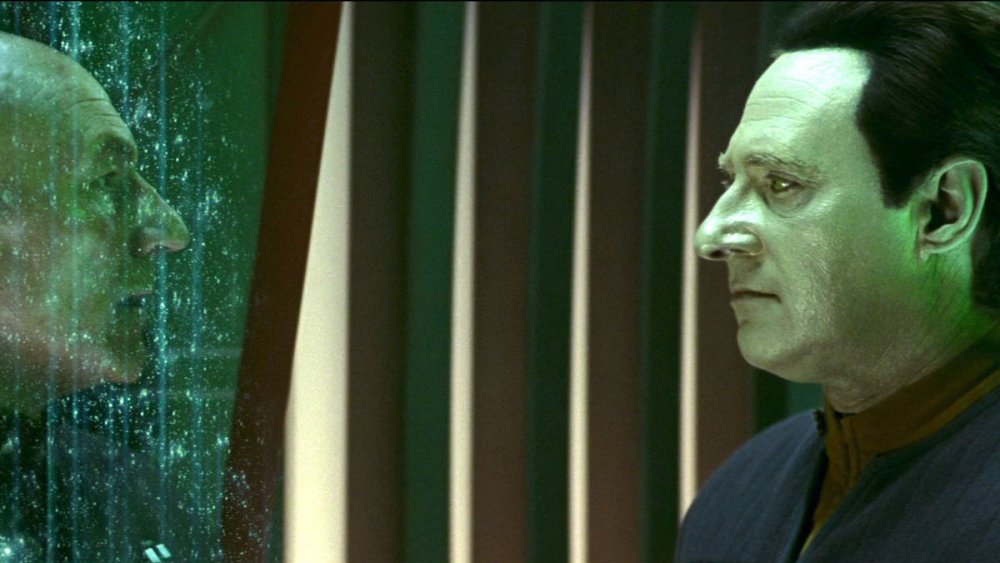Data's Entire Backstory Explained
Star Trek: The Next Generation gave Trekkies a whole host of new and incredible characters, from Captain Jean-Luc Picard and Geordi La Forge to William Riker and Deanna Troi. But perhaps the most memorable of the bunch was Data, everybody's favorite android.
With his super intelligent brain, Data was definitely an asset to the Enterprise crew, and his razor-sharp mind saved the day on more than one occasion. But due to his inability to feel emotions, he encountered all sorts of difficulties and challenges while boldly going where no android had gone before. But perhaps most importantly, Data allowed fans to ask some pretty big questions about the meaning of humanity and what counts as sentient life.
In other words, the saga of Data is absolutely fascinating, and today, we're taking a look at his tale. From his creation to his death and everything in between, here's Data's entire backstory explained.
The creation of Data
Star Trek: The Next Generation operated as a sort of space-based procedural, but that doesn't mean there was zero development over the series. As Jean-Luc Picard and the rest of the Enterprise crew fought conundrums of the week, the characters were built up throughout the show as stand-ins for concepts worth exploring. For example, we learned about conservatism and tradition through Worf, leadership through Picard, and empathy through Troi. As Data's entire life built toward the question of sentience and what makes a person a person, then we should probably start his story at the very beginning.
Data was created in the year 2336 by Dr. Noonian Soong. Soong was an incredibly well-regarded scientist, working for the Federation of Planets on issues of artificial intelligence. In particular, Soong wanted to create a powerful new android brain that could learn in the same ways that men could. Unfortunately, his first several attempts at creating a better android brain were flops, and he fled the Earth in shame.
He ended up living on Omicron Theta under an assumed name. The far-out outpost gave him the space to study androids without fear of being discovered or ridiculed, and he built six androids during his time on the planet. This included Data, his fifth attempt. Data was built for Soong to test solutions to problems from his previous android Lore. Lore was built with the capacity to feel emotions, which led to feelings of superiority. Data had this ability removed in the hopes that Soong could figure out how to upgrade Lore and apply the solution before reactivating him.
Adjusting to life among humans
Data's early life was difficult, to say the least. He was immediately eyed with suspicion by his neighbors, both because he was an unsocialized android with little grasp on how to act in the world and because his brother Lore was deactivated for harboring anti-human ideas.
To get an idea of Data's years on Omicron Theta, just picture the clearly middle-aged android known throughout the series, with the motor functions and reasoning skills of an infant. His differences from Lore made the adjustment to living in the colony all the more difficult. Unlike Lore, he had no ability to process human emotions, which left him unable to understand the need to be polite. His gruff demeanor with the other Omicron Thetans would've been enough to make him an outsider, but his lack of modesty made it difficult to convince the android to wear clothes. Because Data was largely anatomically identical on the outside to a human, this caused a bit of scandal in the small village.
Data was saved by Juliana
Data made few friends among the people who lived on Omicron Theta, including his own creator. Data's older brother, Lore, was made in the exact image of Dr. Soong and was treated as a son by the inventor. Data, as his name suggests, was an experiment, a way to collect and troubleshoot problems to perfect Lore. But Lore eventually came to be impressed by Data, who learned at a much faster clip than his older brother. Free of the distractions of emotion, Data became a reservoir of knowledge and advanced to heights that Lore never reached.
However, Soong's decision to imbue Lore with human emotions couldn't be swept under the rug with a simple deactivation. Knowing that he was to be turned off, Lore called in an alien intelligence to destroy the planet before his creator could flip the switch. The Crystalline Entity attacked the planet, and Data was only saved by Soong's wife, Juliana, who felt protective of all of the androids she helped create alongside her husband. But ultimately, the decision that shaped the rest of Data's life was actually made to save the pride of Juliana's husband.
See, Juliana feared that Data would fail, sending Soong into another tailspin like the one that led to him fleeing from Earth. Rather than allow that, she told her husband that Data was destroyed in the initial attack. Soong fled, leaving his two most successful androids behind on a dead planet.
He was found by Starfleet
Data was found shortly after the attack, when an exploratory party from the USS Tripoli beamed down to the ruined planet. They rebooted Data, which cast him into a deep existential confusion. In an attempt to store all the knowledge of the colony in Data's young brain, Soong deleted all of Data's memories of his own parents. He had no understanding of who he was or where he came from, and he felt entirely unmoored from humanity.
His neural networks in his artificially intelligent brain had to rebuild themselves, as he was cast back to square one. Unfortunately, he lacked the mentorship of his parents, who were much more forgiving of Data's lack of emotion and knowledge because they created him as a blank slate. Absent their leadership, Data briefly lost the will to live when he realized that he could fail in his ability to gain full sentience. His neural processes became more and more complex, and with each new layer of processes, Data ran the risk of making an error and causing a domino effect of machine failures. Faced with the terror of accidentally frying his own brain, Data considered deactivating himself and likened it to suicide in a heart-to-servos with the Enterprise's Geordi La Forge.
Ultimately, Data's innate love of solving puzzles pressed him forward. He treated rebuilding his own mind as a unique challenge that was only suited for someone with a complex computer for a brain, and as a result, he was able to push through.
Data had to learn the ropes
Once Data was fully rebooted and no longer in danger of collapsing his brain, he decided to put his advanced learning powers to good use. As Starfleet was the group that rescued him from permanent stasis on an empty planet, he signed up for the Starfleet Academy. But one member of the Academy's selection board, Dr. Bruce Maddox, objected to allowing Data to attend. After all, Data would be the first-ever android admitted to the Academy that trained cadets for the Federation's exploratory and military wing. As all prior androids on Earth had nowhere near the intelligence and reasoning capabilities of Data, Maddox viewed Data as nothing more than a machine. However, he was overruled. Data excelled at the Academy, quickly becoming an expert in alien biology and the mechanics of probability.
While he was a model student, as you might expect given his superhuman grasp of reasoning and problem-solving, Data still had trouble interacting with people. He came to be incredibly knowledgeable in several fields and graduated with honors, but his built-in limitations in areas like empathy and emotion made him an outcast. He was frequently the butt of jokes that were easy to make, as he had no grasp of humor and an entirely black-and-white view of the information he was given. Data was able to hone his book smarts, but he would struggle with the emotional side of things for the rest of his life.
Serving Starfleet
Data graduated with honors and was assigned to work on the USS Trieste. As The Next Generation featured many of the main players already well up the Starfleet ladder, it's difficult to imagine Ensign Data (and his existence as a repository for inhuman amounts of knowledge makes it even harder), but he served in that lowly rank for three years before being promoted to lieutenant. He earned his spot on the bridge 12 years later, with a promotion to lieutenant commander. It was at that point that Starfleet reassigned him to the Enterprise under the command of Jean-Luc Picard.
Data's time aboard the Trieste was mentioned only in passing throughout the series, but it was clear that Data took part in many important missions before ever taking a seat on the Enterprise. He shared that his ship had passed through an unstable wormhole in one particularly terrifying trip, and the Enterprise's young ensign Wesley Crusher was cowed by Data's long list of Starfleet commendations.
When Data finally met his brother
The universe of Star Trek: The Next Generation was big in theory but small in practice. In spite of the many light-years that Starfleet's advanced ships could travel with ease, every character on the Enterprise was eventually tracked down by characters from their past. So it went with Data, though his troubles were explicitly sought out by the crew of the Enterprise.
Data was entirely unique in the universe, the only android with anywhere near his abilities. So it would make since that the explorers in the Enterprise would want to know more about where he came from. So they traveled to Omicron Theta to figure out Data's confusing origins, as they'd been deleted from his memory. Unfortunately, they found Lore. Data's long-lost brother was reassembled and reactivated by the clueless Enterprise crew, who knew nothing of his disdain for humanity.
Lore lied to Data, saying that he was deactivated because he made the humans of Omicron jealous. He correctly pointed out that he was better at being a human than Data, and he rubbed his ability to comprehend emotion in his younger brother's face. When Data threatened to tell Picard more information about Lore, the new android subdued his brother and impersonated Data in an attempt to take control of the Enterprise.
Lore called in the Crystalline Entity yet again in an attempt to destroy the ship, but he was stopped when Data tossed him into the transporter, and Wesley Crusher beamed him out into space. However, it wouldn't be his last battle with Lore or the last uncomfortable appearance of his android roots.
Data fought for android rights
Yet another figure from Data's past factored into one of the best episodes of The Next Generation. In "The Measure of a Man," Bruce Maddox reappeared in Data's life for the first time since voting against his Starfleet admittance. When Maddox appeared on the Enterprise, seeking to study Data's internal circuitry in an attempt to recreate his still unique brain, Data objected and refused to submit to a procedure he believed would kill him.
Maddox countered that Data wasn't a sentient being and was the property of Starfleet, meaning that he had no rights to his own body. Maddox repeatedly referred to Data as "it" throughout the ordeal, refusing to give him pronouns reserved for humans. Eventually, Maddox forced a transfer of Data to under his own command, while Picard looked for a way out for Data. The android resigned rather than be subject to Maddox's commands, but Maddox countered before a Federation judge that Data had no rights to resign. As property of Starfleet, he had no rights to refuse orders or leave of his own volition.
Ultimately, a trial was convened with members of the Enterprise serving as counsel. Picard defended Data while Riker represented Starfleet's position. Riker expertly laid out the case that Data wasn't a human, and a spooked Picard revealed that he was worried Maddox would be successful in creating new Datas with no rights — a race of superpowered slaves beholden to the Federation.
To prevent this, Picard laid out an incredible case for Data's humanity. He showed that Data could feel sentimentality and ultimately tore down Maddox in a cross-examination. As a result, the judge ruled that Data was officially a machine, but he was the property of no one.
The story of Data's daughter
At a certain point in life, a lot of people will feel like they're missing something — a child. And the same was true for Data, who was unable to have kids. However, the android was able to get around this by building himself a daughter named Lal. But given her incredibly advanced processing abilities and her rapid gleaning of knowledge, Starfleet yet again demanded the right to experiment on Lal in order to determine how she ticked.
Data asserted his desire to protect his child and noted that he had parental rights over his young daughter, even as she moved beyond him. She gained the ability to experience emotions, but this eventually caused her neural network to short out and crash. Data experienced the entire span of having a child in a very brief time, and she died in his arms after telling Data that she loved him (something that Data couldn't share).
Almost human
As you might expect, Data did eventually gain the ability to feel emotions. See, Data's father had been hiding out and working on an emotional chip upgrade for his android son. He then sent out a homing beacon that overrode all of Data's other processes, forcing him to take control of the Enterprise and fly it to Soong's location. Unfortunately, Lore was also pulled in by the beacon.
Data's ne'er-do-well brother stole the chip for himself and fatally wounded Soong. Dying, Soong warned that Lore couldn't function with a chip that wasn't built for him, but the bad guy was in no mood to listen, as Lore resented his father for deactivating him all those years ago. Sadly, Data got to yet again spend time with a family member in their final moments, though he told his father he wouldn't be able to grieve.
Fortunately, Data was able to recreate Soong's chip and implanted it in himself. He was initially very unstable and unable to register the appropriate reactions, and the chip overloaded his neural network in a similar manner to his late daughter. However, he did eventually get himself under control, and when he found himself crying with joy after being reunited with a friend, Deanna Troi explained that his emotional chip was functioning perfectly.
Data was a soldier to the last
Though Data gained the ability to feel fear, he never stopped being an incredibly brave soldier for Starfleet. Much like another logically inclined Enterprise crew member — we're looking at you, Mr. Spock — Data ultimately sacrificed himself to save the rest of his compatriots.
Captain Picard was captured in a battle with the Romulan ship Scimitar, and knowing that he had to save Picard from death, Data jumped through a hole in the Enterprise, across the void of space, to gain access to the rival ship. When he found Picard in distress, he teleported his commander back to the Enterprise over Picard's protests. In one final act in service of Starfleet, Data fired upon the core of the of the enemy ship from the inside, detonating it in a massive blast. This killed everyone aboard, including Data, and allowed the rest of the Enterprise to escape.
In Picard, the recent sequel to TNG, Data appears regularly but only in visions. The man who argued hardest for Data's humanity is deeply haunted by the fact that Data gave his life for him. But even though Data sacrificed himself while having the ability to feel emotions, he'd likely argue that trading his life for the rest of the crew was the logical solution.
